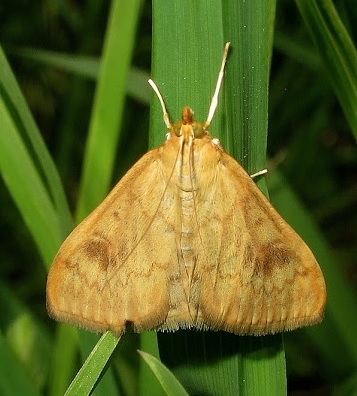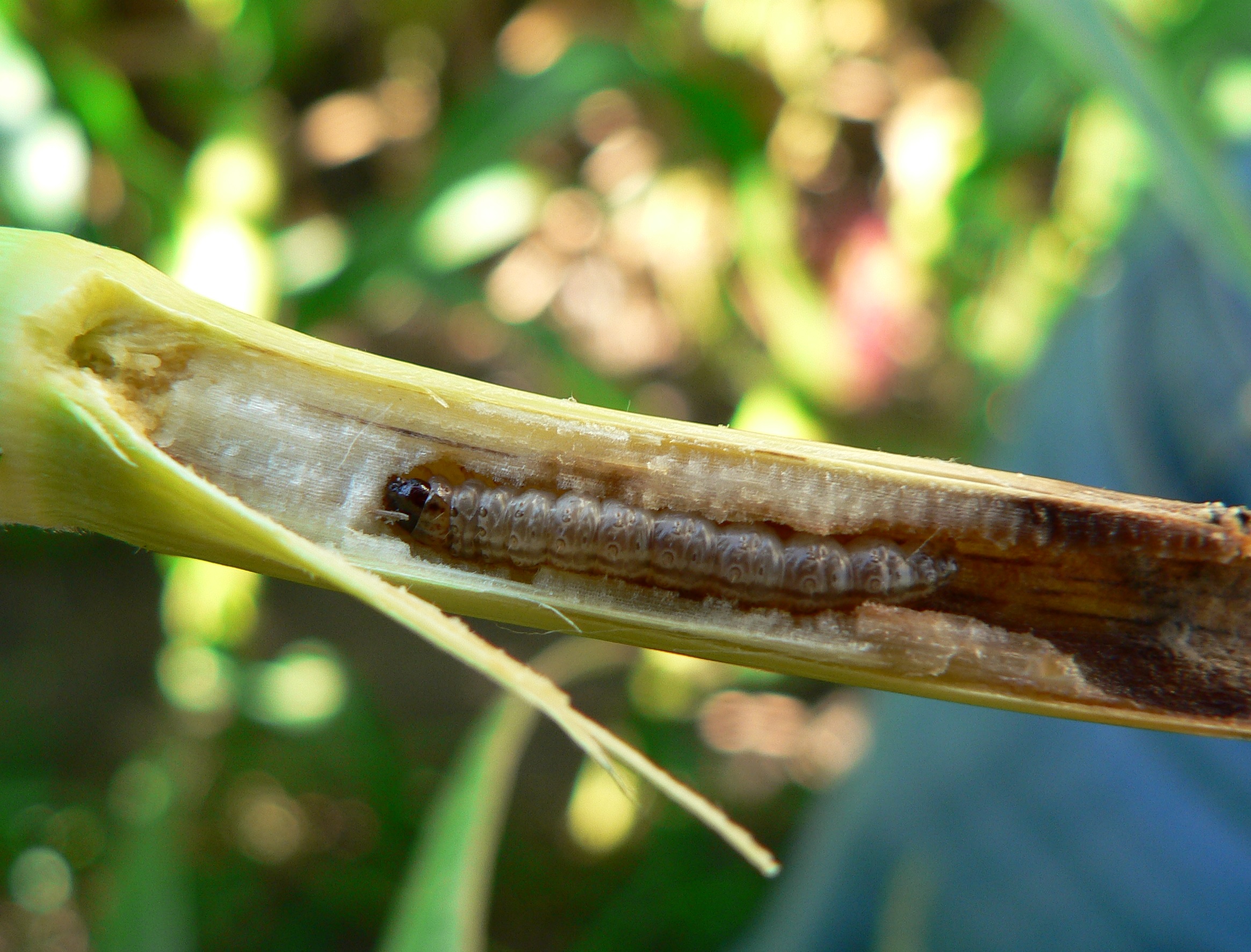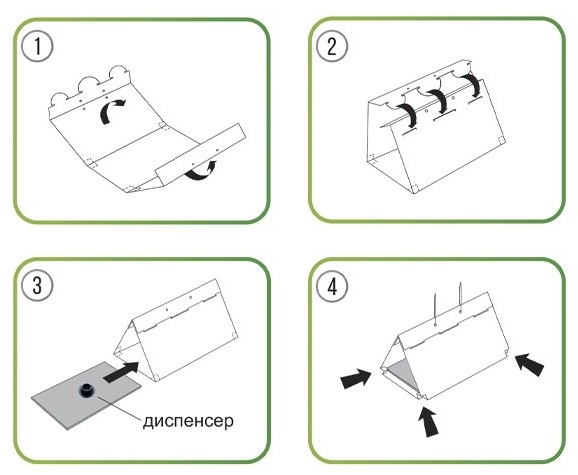Catalogue of traps and pheromones
Download traps and pheromones list

Download document
1.02 mb
The list of forage plants of the pest includes about 250 species from various families. Prefers corn. It damages many cereals (sorghum, rice, oats, rye, barley, chumiz and others), legumes (peas, soy, lupine, clover), nightshade (potatoes, tomatoes, peppers, tobacco). As a result of the pest's activity, suffer industrial and oilseed crops (sunflower, safflower, rami, cotton, kenaf, sesame, poppy, etc.). In the southern areas, it inhabits various shrubby tree species (tea, citrus, etc.). Among the wild plants prefer sow thistles, wormwood, and amaranth.

During the season, 1 – 2 generations develop depending on the climate of the area where the species lives. The clutch contains 10-15 or more eggs, laid on top of each other tile-like and filled with special rapidly solidifying secretions that give the clutch a resemblance to a drop of stearin.
Imago. The first generation of butterflies is observed from June to mid-July. The second generation flies from late August to mid-September. Adults are active at night and at dusk. During the day, they sit on plants on the underside of leaves. For the development of sexual products, butterflies need additional nutrition and moisture.
Mating period. The female lays eggs 3-5 days after emerging from the pupa. In 15-25 days, 10-1200 eggs are laid on the underside of the leaves.
The larva (caterpillar) a few days after hatching penetrates the petioles, inflorescence and the tops of the stems. Later, the larvae spread throughout the plant, excluding ground-level organs, and are embedded inside the stems.

First-instar caterpillars populate the upper and middle parts of plants. In the middle ages, they concentrate inside the stems, in which they gnaw out cavities and passages with holes.

Damaged stems often bend and break off. The caterpillars move to undamaged plants. In autumn, fifth-instar caterpillars concentrate in the lower part of the stems and remain for the winter. In the spring they migrate from the dry stalks in the more humid parts of the plant.
European corn borer is distributed in the European part of Russia, in the North Caucasus, in the South of Siberia, in the Baltic States, Belarus, Ukraine, Moldova, Transcaucasia, Kazakhstan, in the mountains and oases of Central Asia.
The economic threshold of harmfulness of the European corn borer on corn crops is determined in the phase of 6-8 leaves, set when 1-2 caterpillars are detected per plant or 18 % of plants with egg clutches.

SYNONYM:
Botys nubilalis
Botys silacealis
Micracris nubilalis
Micractis nubilalis
Pyralis nubilalis
Pyrausta nubilalis
Pyrausta silacealis
Proper use of Pheromone Traps:
The pheromone trap is designed to monitor and reduce pest numbers. In order to determine the population density of pest insects and to identify pest outbreaks (monitoring), it is recommended to use 1 trap per 1 ha.
The trap should be placed in the crown of the tree at a height of 1.5-2 m. Prior to the first flight of the butterflies, the traps must be checked on a daily basis, and after the first butterflies have been captured, the traps must be checked every 5-7 days. Pheromone dispensers and adhesive tapes can be replaced as needed. Protective measures are based on the results of the monitoring of population density of pest insects.
Trap placement:
For mass capture and sterilization of males, it is recommended to have more than 20 traps per hectare. In case of a large number of pest insects use 30 traps per 1 ha.


Download traps and pheromones list

1.02 mb
Review our catalogue of pheromons and semiochemicals by chemical name

525.1 kb